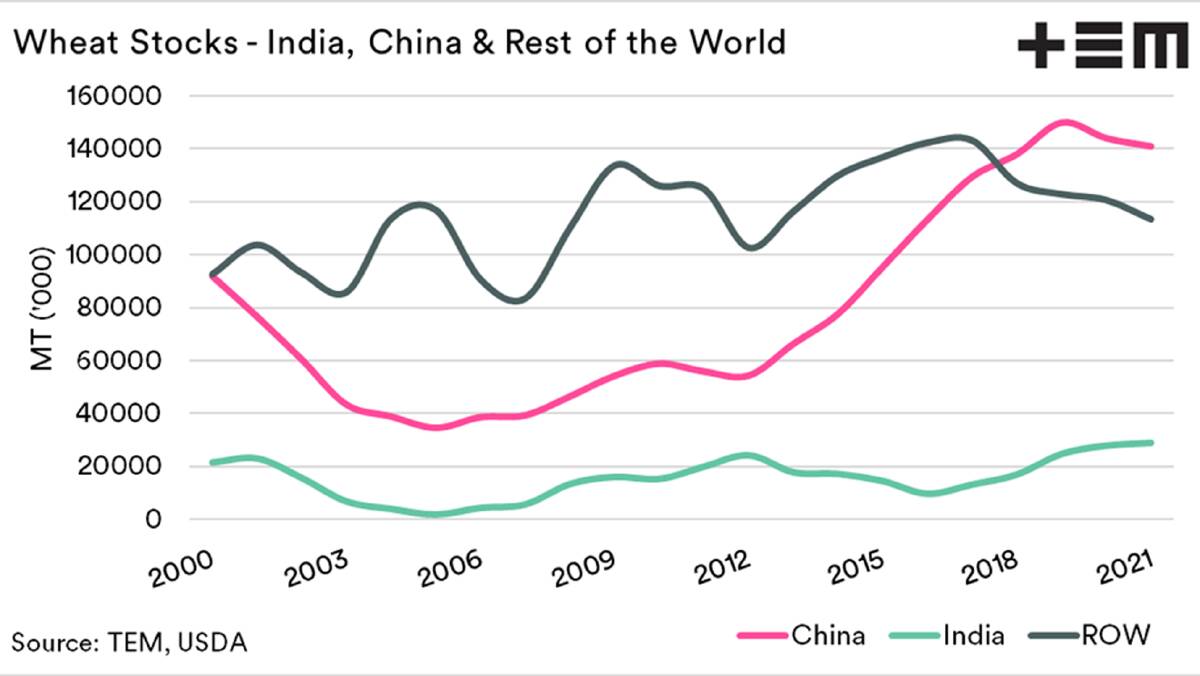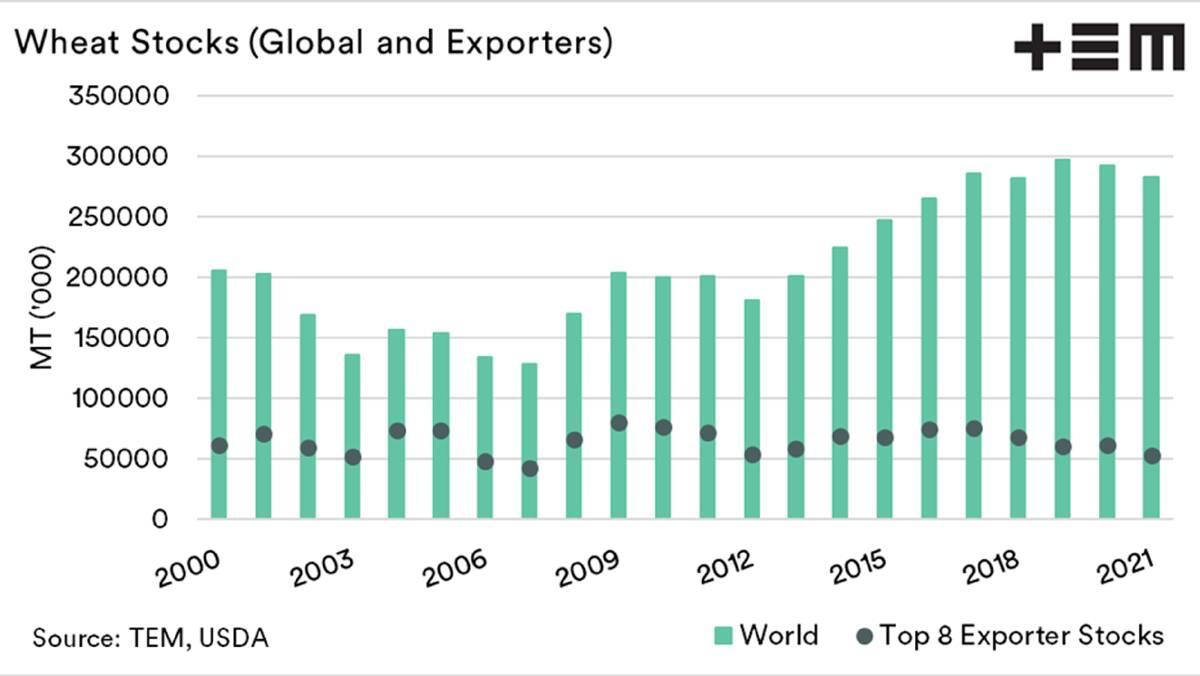
LET's start with the big picture - global stocks.
Subscribe now for unlimited access to all our agricultural news
across the nation
or signup to continue reading
Global wheat stocks are an interesting picture that has to be delved into to get the full story.
If we concentrate solely on the worldwide picture, then things look quite healthy and well supplied.
When analysing the global wheat picture, you have to take consideration of China (and India).
On paper, according to the United States Department of Agriculture (USDA), China holds a vast stockpile of grain.
If we exclude China and India from stocks, we can see that the rest of the world is sitting on the lowest stockpile of wheat since 2012.
If we include China and India, we are sitting on the fourth largest stocks on record.
The volume of stocks held in China/India as a percentage of global stocks has been rising steadily since the mid-2000s.
At present, these two nations account for 60 per cent of the global stockpile of wheat, according to USDA data.
India is a 'sometimes' exporter of wheat, but China is largely absent from export markets.
By discounting these two nations, we get a much better indication of the available stocks to the world.
So what is available?
Chart 2 shows the global wheat stocks, and the dots show the end stocks of the top eight exporters.
The world's exporters are forecast to have end stocks of 53.1 million metric tonne.
This is on a par with 2012, but is the lowest since 2007.
This shows that the world is quite tight when it comes to available stocks at the end of this year.
If there are any major production issues in the coming season, the stage is quite well set for a strong performance.

Do the stocks in China exist?
If we ignore Chinese stocks, world supplies get a little bit tighter.
One of the big questions is whether those stocks exist (and in what state if they do).
Over the past year (and before), we have talked in depth about Chinese imports of grains.
Imports tend to increase for one of two reasons:
- Increasing demand: This tends to be quite linear and slowly increases in demand over time.
Demand doesn't generally increase by huge amounts.
- Decreasing supply: This tends to be quicker.
If a country has a supply issue (drought/flood etc), then imports have to increase in a very short period.
Despite huge stocks of wheat (on paper), China has been importing in vast volumes.
Will this continue into the future?
If they start decreasing their imports, that will have an impact on pricing, especially the barley market, if they reduce corn/barley imports.

